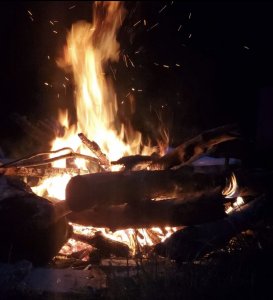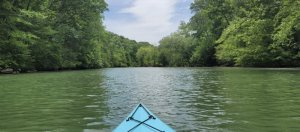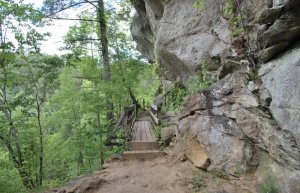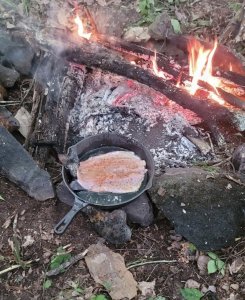
Casandra McBride shares her knowledge of women’s survival skills in the great outdoors.
Conquering a man’s world is one thing, but conquering the wilderness is an extraordinary feat. Naturally, generations of mountain women have survived harsh conditions with little resources and alone. Knowing these women’s survival skills will certainly help you master the outdoors.
Nothing is impossible when you’re determined enough. Of course, learning a few critical survival skills specifically tailored for women is the key to enjoying the outdoors and traveling off of the beaten path. As women who regularly go on long treks and weekend camping and kayaking trips, we’ve compiled this guide to help build your confidence and give you key skills.
Basic Survival Skills for Women in the Outdoors
Your survival skills don’t have to be complex; we aren’t trying to compete with Bear Grylls for a prize. We’re trying to make the best of an adventure with the knowledge and equipment to keep us safe and thriving.
Your most basic survival skills, aside from your instincts and natural senses, will consist of tools, equipment, and knowledge. These skills apply if you’re taking a day trip or spending a weekend kayaking the French Broad River and camping on the banks along the way.
Keep in Touch

You don’t want to stay bound to cellphone service when you’re out exploring. However, it’s critical that someone back home knows where you’re going and where you’ll be. Today, there are some really neat GPS-enabled devices that work even without cell phone service.
Of course, you can install apps to share your intended trails and travel paths with friends and family. Then, stay on course. If no one hears from you at a certain time, they know exactly where to look.
Another nifty trick for keeping in touch is to pull the cellular data maps for your carrier (typically on their website). Cross-reference it with your intended path and let your friends and family know when to expect check-ins. Taking these precautions is the best way to ensure you have help on the way as soon as possible without ever having to communicate.
Know Your Terrain and Travel Area
Planning is a big part of women’s survival skills in the outdoors. Planning your route, getting to know the terrain, and even getting familiar with wildlife and plant life is key to a woman’s survival guide. Too many women stay on well-traveled paths thanks to the innate fear of the unknown.
Staying on well-traveled paths also means you’re missing out on some amazing sights and adventures. Get to know the area you want to go and research it.
For those long treks or lesser-known areas, it’s best to check with local wildlife administrations, Park Rangers, and Google Earth (seriously, you can get a pretty good idea of camping spots, water sources, and more with Google Earth). You can also find some great social media groups on Facebook (just don’t give the dates you’ll be traveling to internet strangers) for tips from locals and those who’ve survived the area.
Getting the Right Tools
You don’t want to weigh down your pack, but you also don’t want to find yourself in the woods without a necessity. Regardless of your intended adventures, we often need a balance between overpacking (guilty) and underpacking (also guilty). Here are the basic necessities we take every time:
- Water purification tablets and a reusable water bottle
- Simple first aid kit
- Firestarter kit
- Paracord and fishing line
- A multi-use tool with pliers, a good knife, a bottle opener, etc.
- Protein bars, fruit snacks, nuts (there’s a reason it’s called trail mix)
- Pocket foraging guide
- A menstrual cup and other reusable feminine hygiene products (optional)
- A whistle and/or mirror for signaling if lost or injured
- A small hatchet
If you’re heading out with equipment like lanterns, your car, or a small grill, keep extra bottles of propane, a can of gas, charcoal, and extra batteries.
These basic tools are great for any situation, from a hiking trip to a weekend of camping. But they may not be all you need to pack. Depending on where you’re traveling and when, a few other necessities may include sunblock, bug spray, and a tick removal tool. The point is to keep it simple without leaving yourself in a pickle.

First-Aid Survival Skills for Women in the Outdoors
None of us want to use or need first-aid skills. But they are necessary when venturing into the outdoors (especially for women). Perhaps you plan on going out with a group of friends, or you’re looking for some much-needed solo time in the wilderness. Understanding how to properly treat wounds, apply tourniquets, and create makeshift splints can be lifesaving.
As someone who travels off the beaten path quite often (staying on known paths is recommended, of course), having first-aid skills instills a healthy level of confidence so you can go further but safely as well.
What You’ll Need
Our goal is always to pack light but still go out well-prepared. We touched a bit on first-aid above. But what should you actually include in your kit?
- Basic supplies like bandages, butterfly bandages, antiseptic wipes, antibiotic ointment, and gauze.
- An oral glucose gel.
- OTC meds, including antihistamines, aspirin, Tylenol, etc.
- Scissors and tape.
- An emergency blanket.
- Hand warmers.
- An irrigation syringe to flush out wounds.
- Any prescription medication.
- Eye drops (it gets dusty sometimes)
- A Splint (SAM splints are lightweight, durable, and reusable)
These items won’t be used on every trip you take (hopefully), but even the shortest day trip can warrant medical attention. It’s also best to keep these items safe and in a water-tight container so nothing gets damaged.
Understanding Plant Life as Remedies
Suppose you do find yourself in need of first-aid, but you don’t have anything. Fortunately, nature provides. While we can’t give you a comprehensive list of plants and remedies (because these vary with each area), we can give you an idea of how to get started.
First, there are many plants that have antiseptic properties. For example, Lamb’s Ear is a common plant in many areas that we have used as bandages. They’re both antiseptic and astringent, making them perfect for surviving in the outdoors.
Dandelions are another beneficial plant that can increase your appetite and ease stomach aches. You can steep them in tea or dry them out. Either way, there are healing plants all around you. Research what grows in your area before taking off and how to properly use it as a remedy.
Must-Have First Aid Skills
If you’ve ever rolled your ankle on a trail, you know how detrimental that can be to getting out of the woods. But if you know what to do when you roll your ankle, you’re better equipped to stay calm and quickly progress through a rough situation.
Hopefully, your first-aid kit comes with instructions. But don’t wait until you’re thirty miles from cell service to find out! You can take a women’s survival and first-aid course or watch some YouTube videos and learn how to treat cuts, bites, and even fractures.
Remember, the idea with your first-aid skills isn’t necessarily to patch up and keep trekking. It’s to get you out of the woods where you can get help.
Defensive Survival Skills for Women in the Outdoors
After talking to many women in hiking groups and along trails, one of the biggest reasons for avoiding adventure is the unique risks women face. You’ve seen the headlines, and those of us who spend a lot of time in the outdoors all have tales starting with “That time that guy…”
It’s quite disheartening that many women avoid nature because of these horrid tales. But, as many of us already know, you can have your hike and enjoy it too. Women are not defenseless, and it’s important to feel empowered.
Keeping Predators Away
Ask any man about avoiding predators as a woman; most of them will implicate your menstrual cycle as a problem. We’ll start by clearing this myth up; there’s no evidence that a woman’s cycle will attract ravenous bears.
As a matter of fact, our focus should be storing food (and other items a bear or mountain lion may find delectable) too close to our camping spots. Properly dispose of any waste you create and keep it away from where you sleep.
Next, men typically don’t have to worry about two-legged threats in the great outdoors. But women do. Unfortunately, feral men aren’t coming to our campsites for food, so there isn’t much we can do to keep them away. But we can remain alert, avoid giving clues about our next stop, and get rude (like really rude). Remember, ladies, as part of your outdoor survival guide; you don’t have to be nice.
Predator Defense
Every woman should have a means of personal defense. Unfortunately, not every woman feels comfortable carrying defense tools. Some simply don’t even know where to start, while others feel like it’s not necessary where they’re going.
On the contrary, personal defense is simply a fact of life for us. We hope never to need it, but we don’t ever want to be without it in case we do. Common defensive tools for women include bear spray, mase, tasers, and firearms.
A firearm that you can properly operate is the key to keeping yourself safe. If you aren’t sure which gun is the best for carrying outdoors, we like a 10mm. It doesn’t have the kick of a .44 Mag, but it is versatile enough to protect you from two-legged threats and larger creatures like bears. Combined with a comfortable holster and a women’s firearm course, danger won’t stop you from enjoying the great outdoors (like any woman should be able to).
Long-Term Survival Skills for Women in the Outdoors
Now, we aren’t planning on getting indefinitely lost in the Olympic mountains or the desert. But if we did, we’d be ready with some invaluable skills like building a shelter, filtering water, and finding food.
 Building a Shelter
Building a Shelter
Some of us just don’t have the upper-body strength to build a log cabin. Aside from that, if you’re injured, building a shelter will be incredibly challenging. If you have some paracord and a hatchet, you’re in pretty good shape (regardless of physical limitations).
You’ll find plenty of building supplies in the forest and some in the desert. But without knot-tying skills and a basic understanding of structural integrity, building a shelter may not be a viable option. Watch some YouTube videos and learn to build simple structures as part of your own survival guide.
Filtering Water
There’s no use in talking about shelters if you’re delirious from dehydration. While we recommend bringing water purification tablets and water bottles with filters, you may need a long-term solution.
You can make filters in the wilderness using pebbles, charcoal, and sand. If you don’t have charcoal, make some by burning wood. Of course, you can also just boil your water and pray help arrives soon.
Getting Food
Lastly, get to know your area and what’s edible. Learn how to skin squirrels or catch fish. There are plenty of resources for food in the wilderness. But you may starve if you don’t know how to get it.
Happy Adventuring!
There are few more rewarding experiences than tackling a long hike or a crazy rafting trip. Fortunately, these adventures are just as accessible to women as they are to men. Build your own survival guide of ours, and enjoy your next adventure!
Women’s Survival Skills: Mastering the Outdoors – Your Thoughts?
Do you have any additional tips that you would add to the above? Please share your views in the comments below.

Cassandra McBride
Cassandra McBride is an avid hiker, kayaker, and enjoys camping with her four children and two dogs. She grew up hiking the Olympic Mountains in the Pacific Northwest, but now resides in the Smokey Mountain region of Appalachia where she enjoys writing and sharing her lifelong wisdom and expertise with other women.














Leave a Reply